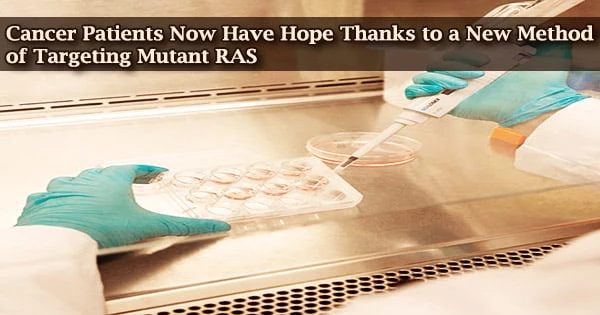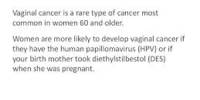Following a 10-year journey, John O’Bryan, Ph.D., and colleagues at the MUSC Hollings Cancer Center have shown a novel therapeutic method to inhibit a protein that is frequently mutated in malignancies.
The results of this proof-of-concept study were released on February 8 in Cell Reports. This research establishes a solid basis for the creation of therapeutic anti-cancer treatments by employing small compounds to block the oncogenic protein RAS.
According to the American Cancer Society, 1.9 million new instances of cancer will be discovered in this year. Researchers are constantly looking for elusive remedies that can influence a variety of cancers due to the pressing demand for more effective medications.
O’Bryan, who is a professor in the Department of Cell and Molecular Pharmacology and Experimental Therapeutics at the Medical University of South Carolina, said,
“RAS is one of the most central and critical regulators of cell proliferation, and it is also the most mutated in cancers. Mutated RAS drives the growth of tumors. This makes it an attractive therapeutic target.”
Nearly 20% of human cancers include mutations in the RAS family of proteins, yet little progress has been made in developing drugs that specifically target this target.
“Think of RAS as a slick ball that does not let anything bind to it. Until recently, it was thought that mutant RAS could not be targeted with drugs. Now there is one FDA-approved drug for mutant RAS in lung cancer, which demonstrates that it is possible to target mutant RAS in some cases,” said O’Bryan.
According to O’Bryan, the new medication sotorasib targets a mutant form of RAS that is only present in fewer than 3% of all human tumors, making it ineffective against most cancer types. Because it may be effective with a variety of mutant versions of RAS in various malignancies, his new approach to therapeutically targeting mutant RAS is more promising.
We were surprised to find that many RAS mutants unlock nucleotides, and the R15 monobody can block these. It is a good sign that more than 50% of oncogenic RAS mutants may be susceptible to inhibitors binding nucleotide-free RAS. This makes targeting nucleotide-free RAS a viable approach for inhibiting many mutant RAS-driven tumors.
John O’Bryan
“Pancreatic, lung, and colorectal cancers are three of the four most deadly cancers, and their growth is driven by mutations in RAS proteins. Therefore, successfully targeting mutant RAS has big implications for patients,” said O’Bryan.
Because of how it works, addressing RAS is difficult. It controls its “on” and “off” states by attaching to other molecules known as nucleotides. When it alternates between the on and off modes, a third state known as the nucleotide-free state also exists.
It was previously believed that RAS could not be targeted during this extremely brief condition because RAS proteins only exist in their nucleotide-free states for very brief periods of time.
The monobody technique, created by O’Bryan’s associate Shohei Koide, Ph.D., from the Perlmutter Cancer Center at New York University, solves the problems with aiming at nucleotide-free RAS. Small artificial binding proteins known as nanobodies can be made to adhere to biological targets either within or outside of cells. Targeting nucleotide-free RAS mutants was previously thought to be difficult.
By using the R15 monobody to target nucleotide-free RAS, researchers have been able to better understand RAS biochemistry and identify ways to stop the cancer-promoting function of this protein. They discovered that the R15 monobody inhibits several RAS mutant forms using a combination of biochemical methods, cell culture research, and animal models.
“We were surprised to find that many RAS mutants unlock nucleotides, and the R15 monobody can block these,” said O’Bryan. “It is a good sign that more than 50% of oncogenic RAS mutants may be susceptible to inhibitors binding nucleotide-free RAS. This makes targeting nucleotide-free RAS a viable approach for inhibiting many mutant RAS-driven tumors.”
There is often serendipity in a research career, O’Bryan said, “We got stuck by our early data because it did not make immediate sense. However, it turned out to be an exciting finding. There is a skill in discerning between insignificant artifacts in the data and something novel that is real discovery.”
Other organizations can target RAS more successfully with the help of the framework provided by this work. Drugs can actually target the RAS protein, which was once thought to be untargetable, according to O’Bryan.
The scientists have high hopes that this discovery will one day be put to more extensive use. New medications based on this idea might be added to the toolbox to treat cancer, he said, even if tumours do adapt and mutation to become resistant to therapies.
Finding tiny compounds in MUSC’s chemical library that can be used to target mutant RAS similarly to the R15 monobody will be the next step in the process. O’Bryan indicated that a tiny chemical targeting nucleotide-free mutant RAS proteins will be a more effective therapeutic because the R15 monobody cannot easily enter cells.
“We are at a really good stage to exploit this mechanism,” said O’Bryan. “MUSC and Hollings have a really great culture of collaboration, which has helped to push this project forward. MUSC’s access to the massive library of small molecules helps to provide a lot of chemical diversity and intellectual property potential.”
According to the researchers, this study opens up a new window of opportunity for the creation of novel anti-cancer drugs that are essential to enhancing patient outcomes.
















